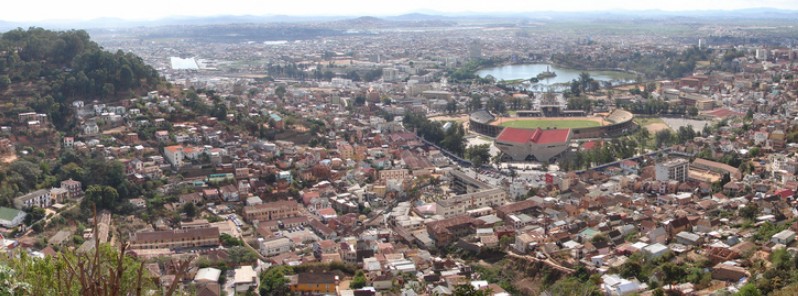Severe plague outbreak affecting large urban areas of Madagascar

Pneumonic plague has been detected in several cities in Madagascar, WHO reports. This form of plague is highly transmissible (person-to-person) and quickly causes death without treatment. At least 19 people have died since August 27.
WHO is concerned that the outbreak may spread because it is already present in several cities and this is just the start of the plague epidemic season, which usually runs from September to April.
Plague is endemic to Madagascar but contrary to past outbreaks, this one affects large urban areas, including the capital and port cities.
The overall risk of further spread at the national level is high, at the regional level is moderate due to frequent flights to neighboring Indian Ocean islands, and at the global level is perceived to be low.
The outbreak is affecting the densely populated cities in Madagascar that include capital Antananarivo/Analamanga with 3 724 021 inhabitants, Tamatave/Atsinanana with 1 412 021 inhabitants, Majunga/Boeny with 889 277 inhabitants, and Finanrantsoa/Haut Matsuartra with 1 333 550 inhabitants.
Eight regions have reported cases including Sava, Boeni and Atsinanana. These coastal regions are non-endemic areas for bubonic plague. Many of the cases identified are directly or indirectly linked to the first recognized case, which is evidence of person-to-person transmission of pneumonic plague.
"Urgent public health response is required and support is needed to strengthen capacities already available at country level to control the outbreak," WHO said.
According to WHO, on August 23, a 31-year-old male from Tamatave, visiting Ankazobe District in central highlands, developed malaria-like symptoms. On August 27, he developed respiratory symptoms during his journey in a shared public taxi from Ankazobe District to Tamatave (via Antananarivo). His condition worsened and he died. His body was prepared for a funeral at the nearest hospital, Moramanga District Hospital, without safety procedures. Additionally, 31 people who came into contact with this case either through direct contact with the primary case or had other epidemiological links, became ill, and four cases of them died.
The outbreak was detected on September 11, following the death of a 47-year-old woman from Antananarivo, who was admitted to a hospital with respiratory failure caused by pneumonic plague. The public health authorities Direction de la Veille Sanitaire et de la Surveillance Epidémiologique (DVSSE) immediately launched field investigations.
As of September 28, 2017, a total of 51 cases (suspected, probable and confirmed) of pneumonic plague, including 12 deaths were reported in the country. The diagnosis was confirmed by the Institut Pasteur de Madagascar by polymerase chain reaction test and using rapid diagnostic test.
In addition to the 51 suspected, probable and confirmed cases of pneumonic plague, and during the same period another 53 cases of bubonic plague including seven deaths have been reported throughout the country. One case of septicaemic plague has also been identified but is not directly linked to the outbreak.
Plague is caused by the bacteria Yersinia pestis, a zoonotic bacteria, usually found in small mammals and their fleas. It can kill quickly if left untreated, but common antibiotics can effectively cure it if they are delivered early.
People infected with plague usually develop "flu-like" symptoms after an incubation period of 1 – 7 days.
There are 2 main clinical forms of plague infection: bubonic and pneumonic. Bubonic plague is the most common form and is spread by rats, pneumonic by person-to-person transmission. The current outbreak combines both forms of plague.
Plague is endemic to Madagascar, where around 400 cases of – mostly bubonic – plague are reported annually.
Madagascar’s last severe plague outbreak in December 2016 affected 68 people and caused 27 deaths.
Featured image: Panorama of Antananarivo, Madagascar. Credit: Anthony Stanley

I had Lyme Disease for five years (2000-2005). My doctor gave me a shot and a prescription for the most powerful antibiotic made, which helped for awhile but didn’t cure it. The antibiotics made me so sick at my stomach I quit taking them and started using a Hulda Clark Zapper to keep the Lyme Disease in remission. But I’d forget to use the zapper and the symptoms would return. I went back and forth like that for over four years. Then I finally cured it by doing the Hydrogen Peroxide Cure For Cancer. The procedure I followed is at this link:
https://www.hps-online.com/hoxy.htm
I’m pretty sure the zapper will kill the Plague (there is info about it online). The zapper I have is called the Don Croft Terminator Zapper. I bought it online about twenty years ago from Tools For Healing in Chattanooga Tennessee. It has been a Godsend for me several times over the years (it will kill the flu in two days). I think Amazon may sell zappers. Tools for Healing has good info about it. I hope this helps.